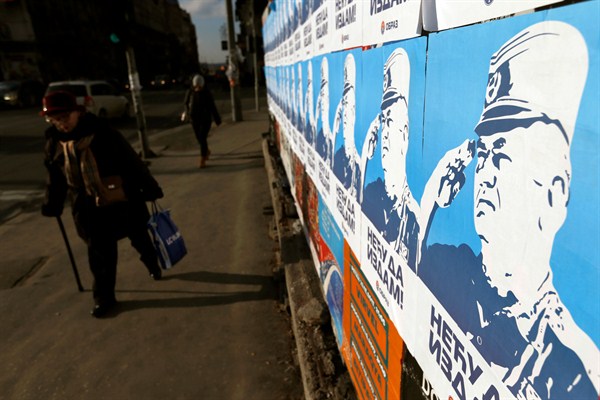BELGRADE, Serbia—Milica Djurdjevic and Anita Mitic used to celebrate birthdays together, but that was a long time ago. Though they still live in the same city, today they meet only at protests, where they find themselves on opposing sides. The former friends, whose childhoods were marked by years of conflict, have starkly different views of that violent past—and starkly different hopes for their country’s future.
Djurdjevic and Mitic were both born in 1990, the year that the first multiparty elections were held in Yugoslavia, a communist federation that had been ruled by Marshal Josip Broz Tito in the decades after World War II. In the wake of Tito’s death in 1980, ethnic nationalists had come to prominence in the states that made up the federation. The girls were mere toddlers when Yugoslav forces attempted to carve out a “Greater Serbia,” which would expand the existing boundaries of Serbia to include all the areas in the region where Serbs lived.
Listen to Valerie Hopkins discuss this article on WPR’s Trend Lines Podcast. Her audio starts at 19:10.

